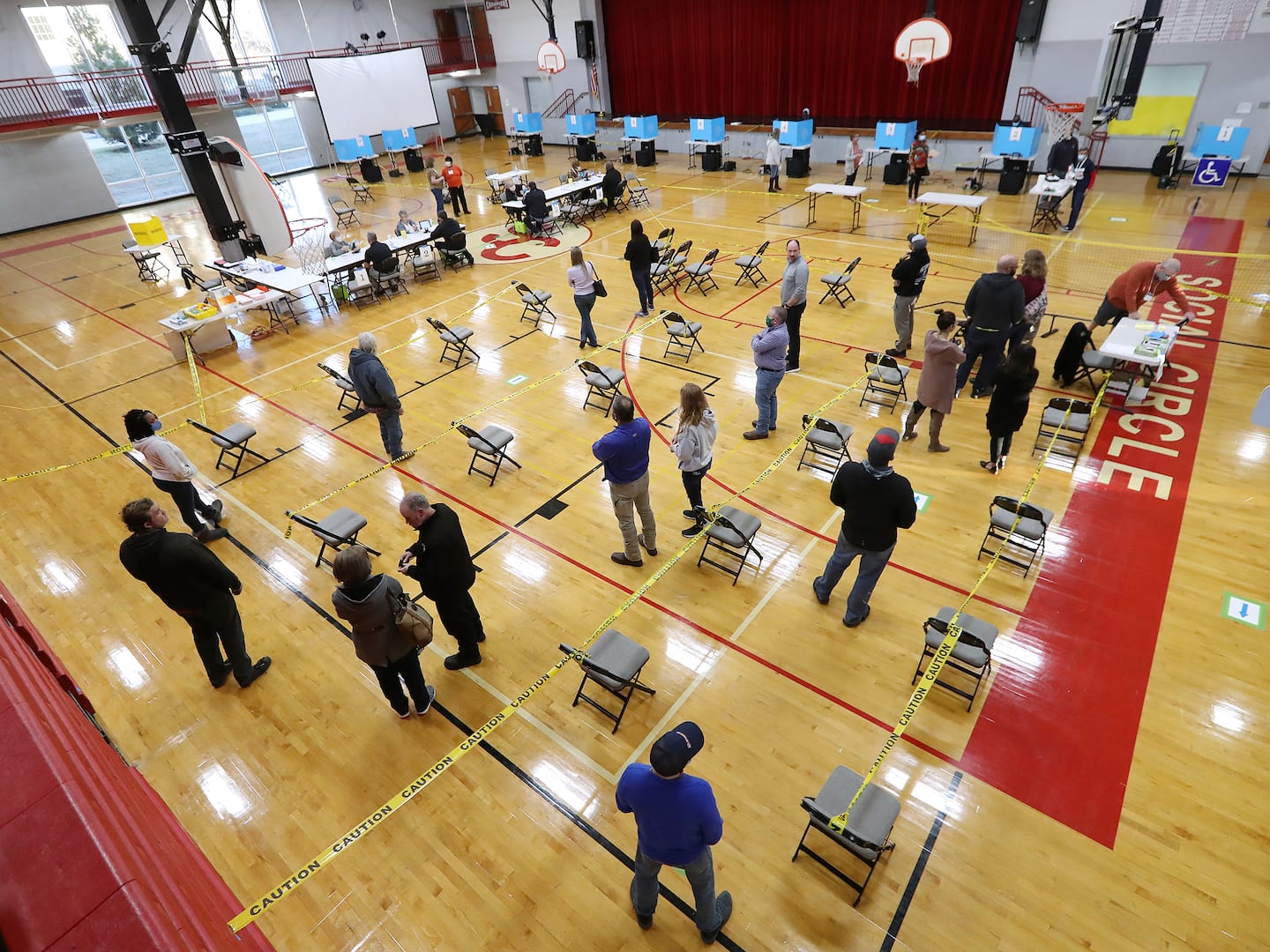Trump is already inventing false allegations of fraud in Georgia

So early Wednesday morning, there was Trump, asserting on Twitter that some 50,000 votes in Georgia had appeared out of the ether — intimating that they’d been produced illegally to aid Democratic candidates.
This follows a tweet late on Tuesday in which Trump predicted that such a “dump” would occur.
This is the rhetorical equivalent of explorers wowing indigenous people by predicting eclipses: If you know what to expect and your audience might not, it’s easy to cast it as something alarming or exceptional.
When Trump tweeted about the “voter dump” that was coming, he was talking about the imminent release of mail ballot counts from DeKalb County. At the time, the number of votes cast statewide was 25 percent lower than the total in November; in DeKalb, the total was down more than 60 percent. The implication? There were obviously more votes to be counted there, unless some near-apocalypse-level event had occurred in the county and prevented people from casting ballots. But it seems likely that a comet striking the Atlanta suburbs would have made the news.
Trump’s Tuesday morning tweet wasn’t much better. Those 50,000 votes that were “found” were found in things like “the mail” or “official ballot drop boxes.” Put another way, they were just ballots.
Before Election Day, the state published data about the number of mail ballots it had already received in each county. As elections administrator Gabriel Sterling explained in response to Trump’s tweet, an increase in the number of expected mail ballots was simply a function of the state getting more ballots. If Alpha County had seen 1,000 ballots come back before Election Day and received an additional 30 ballots on Election Day, that’s not anything nefarious. It’s just voting.
We can put a finer point on it. If Trump’s loosely constructed theory were true, we’d expect to see a big jump in mail ballots in places where the Democrats — for the sake of argument, we’ll look here at Jon Ossoff — did better. But that’s not really what we see.
The county where the difference between the number of counted mail ballots on Tuesday and the number received as of Monday was Fulton County, home to Atlanta proper. There, just under 2,400 more votes were counted as of Tuesday morning. Ossoff won about 80 percent of those votes; his opponent, former senator David Perdue (R-Ga.), whose senate term has expired, won about 20 percent.
How to read this graph: Circles each represent one county. Each is scaled to the number of votes cast in total on Tuesday in the race between Ossoff and Perdue. Circles to the left of the darker vertical line saw fewer mail ballots counted than were expected. Circles to the right saw more. The higher the circle, the higher the percentage of those ballots which were won by Ossoff.
There are four things to notice about this, though.
- An addition of 2,400 votes, of which Ossoff won 80 percent, nets him only 1,440 votes. As of writing, Ossoff leads by more than 16,000 votes, meaning that even if these were illicitly added, they wouldn’t have mattered.
- A number of other counties — 50 in total — saw an increase in votes over what had been counted Monday but gave the majority of those votes to Perdue. Notice Cherokee County, for example. It had an additional 1,076 votes, with most of its votes going to Perdue. Weird way to do fraud!
- Then there are those big circles at the upper left. Those are counties where the votes haven’t all been counted. Ossoff hasn’t been declared the winner of the contest yet, but given how many thousands of votes might be expected in those counties where he’s doing well, he’s in very good position. But again, he leads even without those votes being counted yet. Er, sorry: dumped yet.
- The increase in votes in Fulton County should be considered in the context of the size of its circle; that is, in the context of how many votes were cast in the county.
So let’s consider that.
If we look at how many mail ballots have been counted as a percentage of what had been tallied by Monday, we see that the increase in Fulton — the outlined circle below — isn’t particularly exceptional. In fact, the average increase in each county between Monday and the current count is 103 percent. In Fulton, the increase over what was counted by Monday stands at about 102 percent. Meaning that it had seen relatively few additional ballots counted.
The outlier here is Burke County. We highlighted Burke on the graph above, too, but it just blends in because it’s so small. Burke County’s mail-ballot total as of writing is about 170 percent of what had been counted by Monday. But it’s an addition of only 710 ballots in a relatively small county.
Something similar happened in Echols County, too, where the number of tallied mail ballots is 125 percent of what was counted Monday — thanks to an increase of 18 ballots.
Perdue will probably lose because the margin in heavily Black counties shifted toward Ossoff, while turnout in more Perdue-friendly counties fell more. There’s simply nothing suspicious about how and when the votes were counted, and no good-faith actor with any familiarity of the subject would suggest that there is.
Yet Trump does.
During a news conference Tuesday morning, Sterling weighed in more directly on Trump’s claims.
“No evidence of any irregularities,” he said in response to a question. “The biggest thing we’ve seen is from the president’s fertile mind of finding fraud where none exists.”
*** This article has been archived for your research. The original version from The Washington Post can be found here ***

